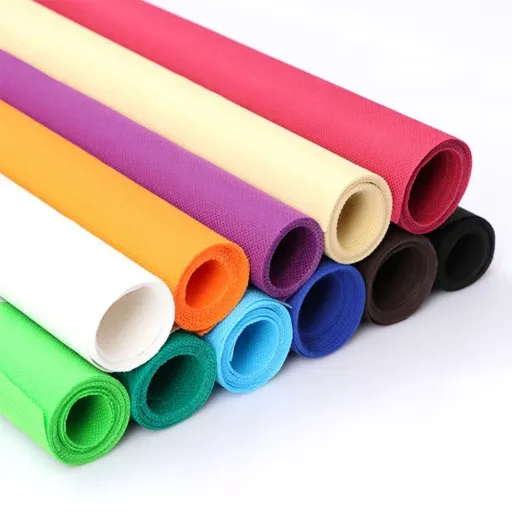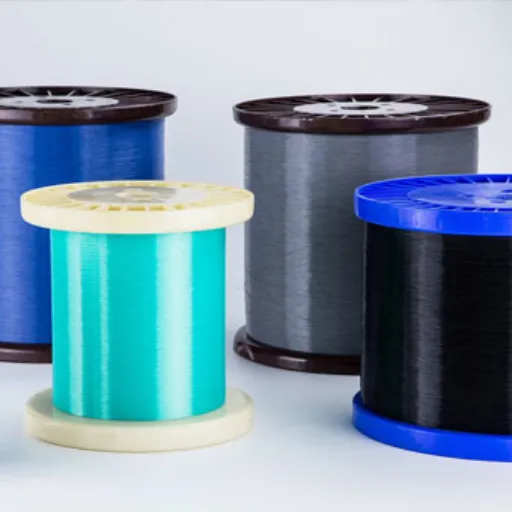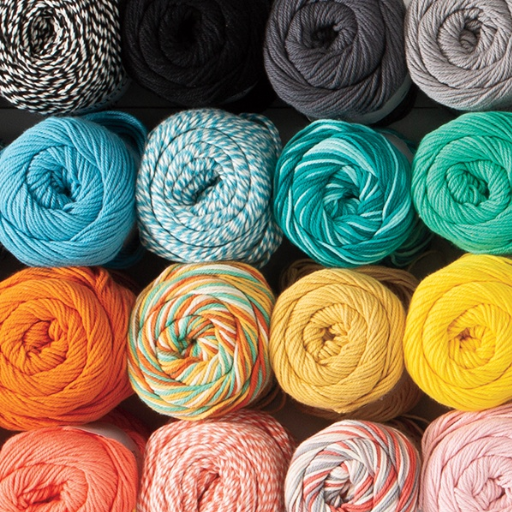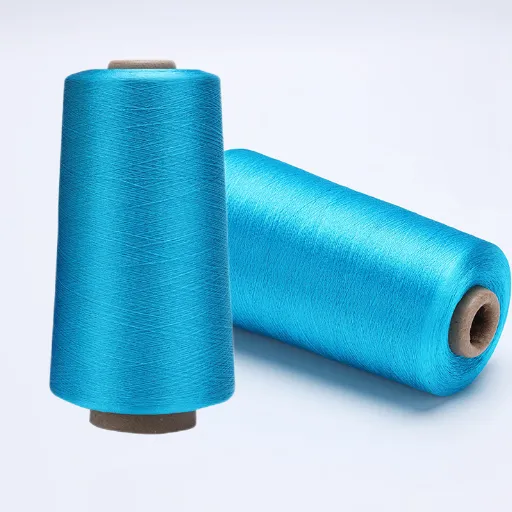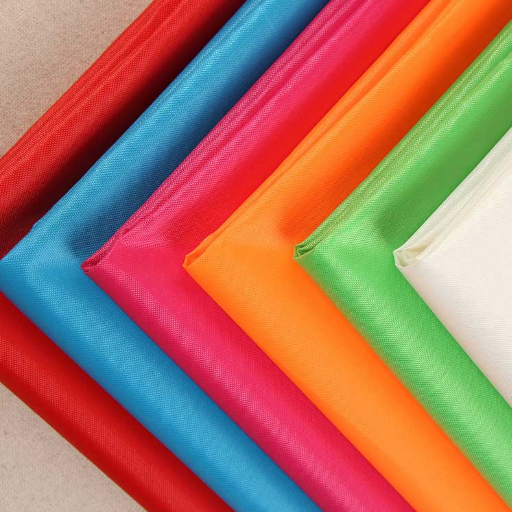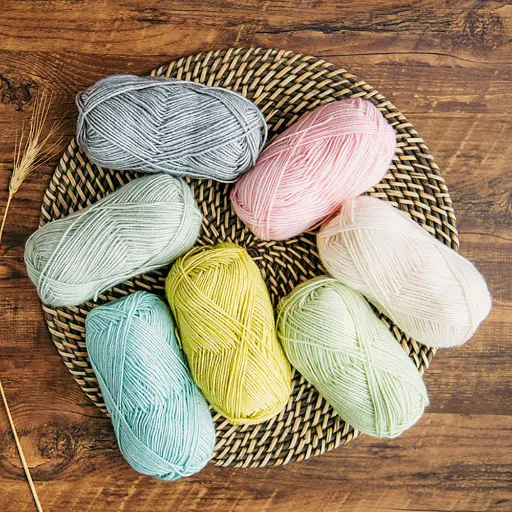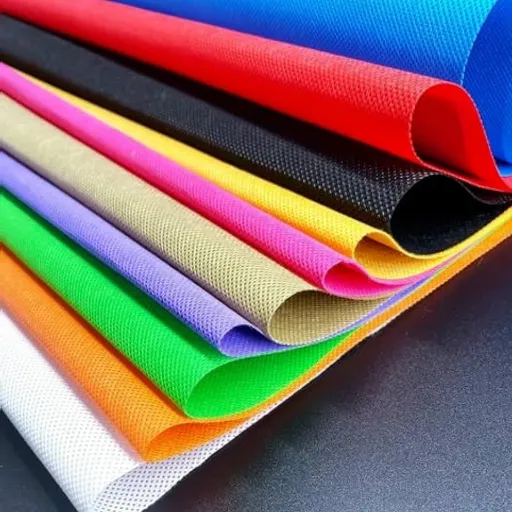Filament yarn plays a vital role in the textile industry, shaping everything from everyday clothes to highly specialized fabrics. But what exactly is filament yarn, and what makes it so different from other types of fibers? This guide delves deeper into the realm of filament yarn, revealing its unique characteristics, production processes, and the diverse roles it plays in various applications. Whether you are a textile buff, working in design, or just curious to know more about what surrounds us, this comprehensive study will present you with some valuable information about one of the basic building blocks of modern textiles. Read on to find out about filament yarn and the fabric it lies in our lives!
Introduction to Filament Yarn

The word “filament” in yarn refers to a continuous strand of fiber, either naturally long, as in silk, or extruded in a synthetic manner, such as polyester, nylon, or rayon. Filament yarns have smooth surfaces and uniform thickness, and thus they create glistening, sleek textiles, contrary to staple yarns that are made by twisting shorter fibers together. They are widely employed where durability, strength, and texture are required, whether for sportswear, upholstery, or high-performance textiles, among other applications.
Types of Filament Yarns: Monofilament vs. Multifilament
Filament yarns are categorized into two main types in terms of their structural characteristics: monofilament and multifilament.
Monofilament Yarns
Monofilament yarns are made up of a single filament, continuous by their nature, and are used mainly in applications where a smooth, strong, and durable surface is required. A few examples include fishing lines, surgical sutures, and some industrial fabrics. Their simplistic nature makes them stronger and more resistant to abrasion, albeit at the expense of reduced flexibility compared to multifilament yarns.
Multifilament Yarns
Multifilament yarns consist of a significant number of thin filaments that have been twisted or bundled together. This composition offers a softer feel, greater flexibility, and an enhanced texture; hence, it is suitable for garments, upholstery, and other textiles that require a softer touch. The use of multifilament yarn enables the fabric to breathe more effectively and manage moisture, thereby enhancing wearer comfort.
Key Insight: In areas where monofilament yarns are used, their durability and strength are crucial; on the other hand, multifilament yarns are needed for their comfort, texture, and adaptability to a wide range of fabric applications.
Key Properties of Filament Yarn
The essential characteristics of filament yarns contribute to the versatility and wide range of applications they enjoy in textile manufacturing. These are as follows:
- Strength and Durability: Filament yarns, particularly monofilament types, come under high tensile strength, withstanding any wear and tear; hence, they find application in making heavy-duty materials.
- Smoothness and Uniformity: Since filament yarn consists of continuous, unbroken fiber, it imparts smoothness to the fabric; hence, it is used to develop elegant, luxurious materials.
- Elasticity: Multifilament yarn can impart good elasticity to the fabric, allowing it to regain its shape after stretching, thereby increasing the life of the apparel and its utility.
- Shininess and Appearance: The glossy, gentle, and elegant finish provided by filament yarns significantly enhances the textile’s allure and character; these are primarily used in decorative or fashion fabrics.
- Lightweight Nature: While filament yarns are lightweight, they provide comfort and ease to the finished product.
- Moisture Management: As multifilament yarns improve the breathability and water-wicking characteristics of the fabric, they help keep activewear and other performance textiles comfortable.
Applications Across Industries
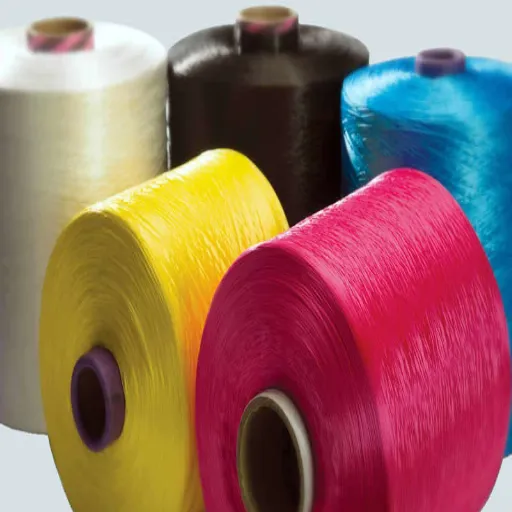
Fashion and Apparel
Filament yarns are used in the production of stylish, durable, and comfortable clothing that encompasses both active and casual wear.
Sports and Performance Textiles
These yarns are used in the making of high-performance athletic wear due to their moisture-wicking and lightweight properties.
Industrial Use
They are used to make ropes, nets, and other materials that require strength and resilience.
Home Textiles
They are used in the manufacture of bedding, curtains, and upholstery, contributing to usefulness and visual appeal.
Automotive Sector
These yarns are used in the production of car interior upholstery and seat covers, ensuring good durability and finish.
Textiles and Apparel
The textile and apparel industries are undergoing rapid changes, primarily driven by technological advancements and shifting consumer preferences. Sustainability has become a significant trend, with an emphasis on using increasingly eco-friendly materials, such as organic cotton, recycled fibers, and biodegradable fabrics. The industries strive to innovate toward lessening the environmental harm caused by textile production and waste.
Meanwhile, incorporating smart textiles embedded with electronics has changed clothing from a mere layer of protection to a functional gadget along wearable technology lines. Such garments include apparel for fitness monitoring and temperature-regulating fabrics, which are becoming increasingly popular among consumers seeking multifunctional clothes that combine practical use with innovative technological solutions.
Personalization and customization are two significant forces shaping this industry, which primarily caters to a highly tech-savvy generation. Thanks to artificial intelligence and online platforms, we now have the power to design our own apparel, expressing an enduring need for differentiation and uniqueness.
Automotive and Industrial Uses
The standardization and transformation of production functionality and safety standards in the automotive and industrial sectors are undergoing profound changes with the development of smart textiles. Materials with sensors embedded within them are being installed in seats to monitor the driver’s condition, including fatigue and posture, for improved road safety. Moreover, temperature-regulating fabrics and vibration-proof textiles are being installed in car interiors to ensure occupant comfort and long-term durability. Smart textiles are being utilized in industrial environments to protect workers, providing real-time data on temperature, toxic gas levels, and other environmental hazards. This reminds us of how these advances could be pushing the horizon of smart textiles in transforming conventional applications with technology-based solutions.
Medical Applications
The medical field is undergoing noteworthy transformations due to advancements in fabric technologies. Intelligent substances are capable of real-time monitoring of the patient’s vital signs, which could include parameters such as heart rate, respiratory rate, and body temperature. For instance, sensor-embedded intelligent wearables can quietly monitor health data and alert medical professionals when something is amiss, thereby improving the prognosis for affected patients. Such textiles have also been applied in rehabilitation, including compression garments that modulate pressure according to patient requirements or fabrics that stimulate muscle activity to accelerate healing. These innovations represent a massive leap toward personalized healthcare and preventive medicine.
Key Benefits of Filament Yarn Over Other Types
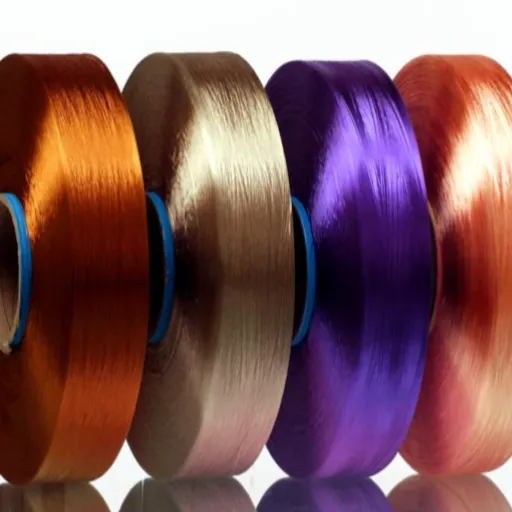
| Benefit | Description |
|---|---|
| Strength and Durability | Filament yarns hold a high tensile value in strength and therefore define durability in almost all types of yarns. |
| Smooth Texture | These yield finer textures and maintain uniformity, making them suitable for hands-on production of sleek, glossy-finished fabrics. |
| Resistance to Pilling | Being made of continuous fibers, filament yarns offer a degree of resistance to pilling and therefore retain a cleaner, more refined look over time. |
| Versatility in Applications | Basic in nature, their flexibility is accompanied by good performance properties, allowing them to be used in a wide range of textile applications, from apparel to industrial materials. |
| Lightweight Properties | Filament yarn fabrics remain lightweight yet strong, making them suitable for a wide range of functional and decorative applications. |
Comparison with Staple Yarn
They consist of short fibers, with the spun fibers often natural ones, such as cotton or wool, or synthetic cut fibers. Staple yarns deliver an extra-soft, warmer feel that is ideally suited for sweaters, scarves, or any other premium-type wear apparel. The downside to this is that it leads to more pilling over time, due to the small fiber ends that protrude from the yarn surface. While it is excellent for its absorbent and natural feel on the skin, the staple yarns lack the gorgeous, sleek finish and the wear resistance of the filament fibers. Ultimately, the yarn one chooses depends on the primary attributes the fabric must possess, including texture, durability, and functionality.
Case Studies in High-Performance Fabrics
This case can be considered instructive on the blending of newer types of filament and staple yarns for uses in performance wear. Companies increasingly stressed a twofold lineage of fabric: absorbent and soft, derived from staple yarns; and strong and elastic, from filament fibers. Modern sportswear, for example, often incorporates polyester filament for durability and moisture-wicking characteristics and blends it with cotton staple yarn to enhance comfort and breathability. The synergy of these two materials has proven quite successful in meeting the needs of professional athletes who require working in their clothes under high-stress scenarios.
Market Impact: Data shows that these hybrid fabrics have undoubtedly increased customer satisfaction. According to reports released in 2023, consumer interest in performance wear featuring this dual-fiber technology has increased by more than 20% in recent years, reflecting both the success of this approach and the market’s need for innovation in this area. This case serves as an example of how the attributes of filament and staple yarns can be leveraged to provide a tailored solution to meet special demands.
Innovations in Filament Yarn Production
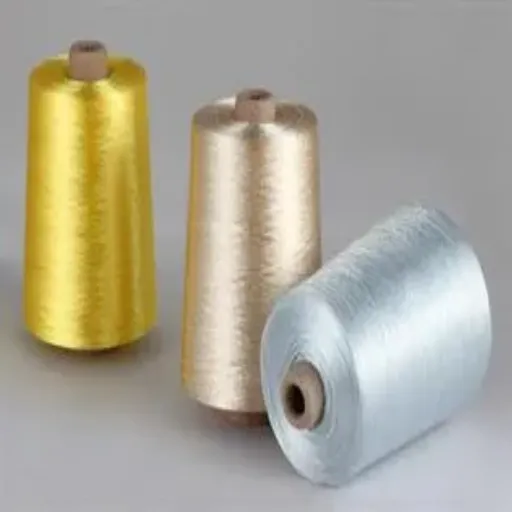
Recent innovations in filament yarn production are geared toward enhancing efficacy, sustainability, and product performance. To this end, some key changes relate to advancements in high-speed spinning systems, ensuring that production proceeds quickly without compromising yarn quality. On the other hand, the use of environmentally friendly materials such as recycled polyester and bio-based alternatives serves sustainability causes while simultaneously fulfilling consumer demand for a green alternative. Greater accuracy in texturing has enabled producers to manufacture filament yarns with enhanced properties, including durability, elasticity, and softness, suitable for applications such as activewear, home textiles, and industrial uses. These changes signify the industry’s commitment to striking a balance between environmental and commercial interests.
Innovative Applications of Filament Yarns
This is an excellent example of modern utilizations of the filament yarns, indicating their versatility. One special use pertains to the manufacture of smart textiles in which conductive filament yarns are incorporated to develop wearable technology that may monitor health parameters or optimally engineer athletic performance. Another application of the high-strength filament yarn is in the automotive industry, where it is used to create lightweight yet strong interior parts, enhancing fuel efficiency and sustainability. The medical sector also benefits from this advantage, utilizing biocompatible filament yarns in sutures and implants. Such varied applications remain a testament to the very presence of filament yarns in advancing technology to meet the ever-changing industrial challenges.
Future Trends in Filament Yarn Production
-
1
Environmental Preservation: Environmental preservation is one of the most crucial aspects in filament yarn manufacturing nowadays. Hence, manufacturers have invested in research into biodegradable or recycled yarns to offer consumers a choice who are environmentally conscious.
-
2
Smart Textiles: In the quest for novel design possibilities, the advent of smart textiles also aims at embedding electronic components in filament yarns to ensure functionality and interaction.
-
3
AI and Machine Learning: The widespread adoption of AI and machine learning methods in production also underscores the effectiveness of these systems in enhancing efficiency, quality control, and customization. The ever-changing methods of producing filament yarns, as newer innovations continue to emerge, lie in the constant evolution of processes aimed at technological and sustainable advancements.
Sustainability in Filament Yarn Production
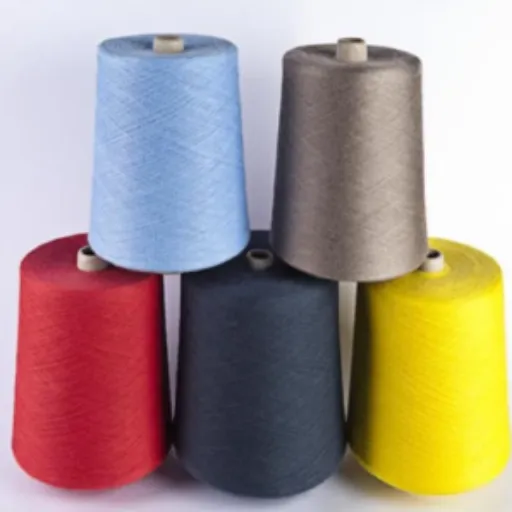
Sustainable Production Approaches
Producing filament yarn sustainably entails minimizing environmental impact through innovations in both practice and materials. Some major approaches include the use of recycled raw materials, such as PET bottles, the adoption of energy-efficient manufacturing methods, and the minimization of water and chemical use in current processes. Earlier, truly promising biodegradable and bio-based yarns began to be developed, offering environmentally friendly alternatives to traditional synthetic ones. They thus attempt to reduce their carbon footprints while establishing a closed-loop system to foster sustainability in the textile industry.
Environmental Impact of Filament Yarn
Filament yarn has long been recognized for its strength and good wear; however, it is also noted for the environmental impacts associated with its production and disposal. The manufacturing processes of synthetic filament yarns, such as those made from polyester and nylon, utilize non-renewable resources like petroleum, thereby contributing to greenhouse gas emissions. Additionally, a significant amount of energy and water is used during the production process, further exacerbating its ecological impact. Disposal presents even more problems; the synthetic fibers of these yarns are non-biodegradable and remain in landfills for decades, potentially polluting ecosystems. With the advent of recycled filament yarns and closed-loop systems, we have witnessed partial redress to these issues. The above considerations should indeed emphasize the dire need for the entire industry to implement green practices, thereby reducing filament yarn footprints towards a sustainable ecological balance.
Sustainable Innovations in Fiber Production
Sustainable innovations in fiber production are concerned with both environmental stewardship and the efficiency of production processes. My thought is that the use of bio-based materials, improved recycling technology, and renewable energy sources are the steps that will facilitate sustainability in this field. These steps reduce not only waste but also carbon footprints associated with textile production, making it a very pertinent agenda.
Reference Sources
There are three recognized authoritative references that you may consult to establish the correctness of your article on “filament yarn”:
- Fibre to Yarn: Filament Yarn Spinning
The article provides a comprehensive account of the production of filament yarns, detailing all extrusion-spinning systems and the yarn-count systems used for specification. - Technical Textile Yarns
The book covers filament yarns with special reference to their properties, uses, and production methods in relation to thermoplastic polymers. - Sustainability in Yarn Manufacturing
This source examines the sustainability aspects of yarn manufacturing, comparing filament yarns with staple yarns and highlighting their environmental impacts.
Frequently Asked Questions (FAQs)
Filament yarn is a type of yarn made from continuous strands of fibers, typically produced through a process called extrusion. In this process, a polymer solution, such as polyethylene terephthalate (PET), is forced through spinnerets to form long filaments. These filaments can then be stretched and wound onto spools, producing a versatile yarn often used in fabrics and garments.
Polyester filament yarn boasts several unique properties. It is known for its high tenacity and durability, making it suitable for a variety of applications, including outdoor and sports wear. Additionally, polyester yarn exhibits excellent heat resistance, quick-drying capabilities, and wicking properties, enabling it to effectively manage moisture and provide comfort to the wearer.
Filament yarn differs from spun yarn primarily in its composition and production process. While filament yarn is made from continuous filaments, spun yarn is produced by twisting staple fibers together. This results in a thicker and bulkier texture for spun yarn, whereas filament yarn typically offers a smoother finish and superior strength, making it ideal for applications requiring high-performance characteristics.
Filament yarn is widely used in various applications due to its exceptional strength and flexibility. It is often found in sewing threads, geotextiles, and high-performance fabrics. Its high resistance to wear and tear makes it suitable for outdoor gear, sportswear, and fire-retardant applications, where durability is essential.
Spandex, also known as elastane, is often blended with polyester filament yarn to enhance its elasticity and stretch characteristics. This combination allows for greater freedom of movement in garments, making it ideal for activewear and form-fitting clothing. The addition of spandex can improve the overall comfort and fit of the final product.
Yes, filament yarn is widely used in geotextiles due to its high modulus and durability. These materials are designed for use in civil engineering applications, including soil stabilization and erosion control. The unique properties of filament yarn, including its resistance to environmental factors, make it an excellent choice for geotextile applications.
Textured yarn, often produced from filament yarn, offers additional benefits, including increased bulk and a softer hand feel. Texturizing processes can enhance the yarn’s covering power and provide improved insulation properties, making it suitable for various textile applications, including knitwear and outerwear fabrics.
The spinning process is crucial for filament production as it determines the final characteristics of the yarn. Techniques such as melt spinning and air jet spinning influence properties like elongation, crimp, and overall strength. A well-controlled spinning process can enhance the physical and mechanical properties of the filament yarn, ensuring it meets the demands of specific applications.
Partially oriented yarn (POY) and fully drawn yarn (FDY) differ in their degree of molecular orientation and stretching. POY is produced with some orientation but requires further processing to achieve full strength and durability. At the same time, FDY is fully drawn during production, resulting in higher strength and better performance characteristics. This distinction is essential when selecting yarn for specific applications.









